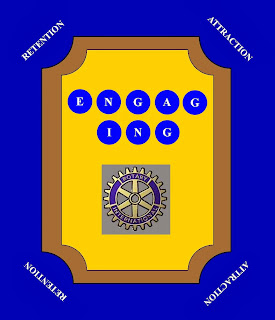Rotarians from
Florida,
Minnesota, and
Massachusetts,
and from the Caribbean,
Australia
and
India
have recently communicated ideas to the Angry Rotarian. Not all supported his opinions, but all did center
on the importance of retaining members. As
Matt Ridley states in his
book,
The Rational Optimist, and in his
TED TALK, ideas getting
together, having sex, and giving birth to other ideas have substantially
improved our world. Perhaps similar
orgies would improve membership.
A few typical comments:
- "To me the most bothering issue that
Rotary is facing today is membership and its retention."
- "Rotary International has many
tools, but they seem to be at such a high level that they just are not all
that useful on the ground."
- "One hat does not fit all
clubs."
- "Service projects can destroy
clubs."
- ". .members left because of too
much fundraising."
So why not get district membership chairs together in two-day
Zone Membership Seminars and stimulate them so their ideas can have sex and
give birth to applicable ideas? Seminar expenses, including travel and lodging
for qualified attendees, could come from the Zone Director's Membership
Development budget.
Typical Day One
Plenary Session 7:30 - 8:30
Keynote Speaker
Breakout Sessions 9:00 - 11:45 Min - 10 Max -15 Attendees
Lunch 12:00 - 12:45 (no speaker)
Breakout Sessions 1:00 - 3:30
Break to edit/revise/prepare individual responses to the question: What is Rotary?
Breakout Sessions 4:00 - 5:30 Each attendee present and defend
response.
Social 6:00 - 6:45
Dinner 7:00 - 9:00 (Director or Coordinator comments
optional)
Typical Day Two
Breakouts center on ways and means to
communicate fundamentals to clubs, how the district could analyze potential
locations for new clubs, AND what support is needed from Rotary International
and why.
Plenary Session 7:30
- 8:30 Keynote Speaker
Breakout Sessions 9:00
- 11:45
Lunch 12:00
- 2:00 Director or Coordinator comments and Panel with Q/A.
Main topic to be on quality R.I. support.



.jpg)












































